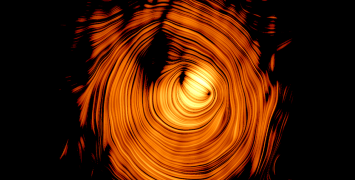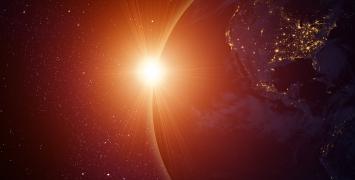Jupiter was a late bloomer
With a diameter of around 143,000 kilometres and a mass 300 times that of the Earth, Jupiter is the largest planet in the solar system. Scientists have debated for decades how such giants formed. Now, astrophysicists of Universities of Bern and Zürich and of ETH Zürich, amongst which are ERC grantees Yann Alibert and Maria Schönbächler, proposed a solution to this puzzle. The research results, published recently in the magazine Nature Astronomy, provide crucial hints to long-standing questions about the formation of other planets in the solar system and beyond.

Based on University of Bern press release
The new model shows that Jupiter grew in three distinct phases. First, the planetary embryo rapidly accreted small, centimetre-sized pebbles and quickly built a core during the initial one million years. The following two million years were dominated by slower accretion of larger, kilometre-sized rocks called planetesimals. They hit the growing planet with great energy, releasing heat.
During the first stage the pebbles brought the mass, in the second phase, the planetesimals brought energy
explains Dr Alibert, Science Officer of NCCR PlanetS (a Swiss-wide research network supported by the Swiss National Fund since 2014) and first author of the paper. After three million years, Jupiter had grown to a body of 50 Earth masses. Then, the third formation phase started dominated by gas runaway accretion leading to the gas giant we know today.
Solar system divided into two parts
This model for Jupiter’s birth matches the meteorite data that were presented at a conference in the US last year. At first, the researchers were puzzled when they listened to the results. Measurements of the composition of meteorites, Pr Schönbächler's area of expertise, showed that, in the primordial times of the solar system, the solar nebula was divided into two regions during two million years. It could therefore be concluded that Jupiter acted as a kind of a barrier when it grew from 20 to 50 Earth masses. During this period, the forming planet must have perturbed the dust disk, creating an over-density that trapped the pebbles outside of its orbit. Material from outward regions of the solar system could not mix with material of the inner parts until the planet reached enough mass to perturb and scatter rocks inwards.
Explanation for delayed growth
The scientists were perplexed about the long time it took Jupiter to grow from 20 to 50 Earth masses. This triggered their investigation into the planet's formation. The initial models used were developed thanks to ERC funding. The researchers showed that the time the young planet spent in the mass range of 15 to 50 Earth masses was indeed much longer than previously thought. During this formation phase the collisions with the large rocks provided enough energy to heat the gaseous atmosphere of the young Jupiter and prevented rapid cooling, contraction and further gas accretion.
Pebbles are important in the first stages to build a core quickly, but the heat provided by planetesimals is crucial to delay gas accretion so that it matches the timescale given by the meteorite data
the astrophysicists summarize. They are convinced that their results also provide key elements for solving long-standing problems of the formation of Uranus and Neptune and exoplanets in this mass regime.
 Yann Alibert made his master and PhD in astrophysics at the Ecole Normale Superieure in Lyon. He then worked six years as a postdoc at the University of Bern, and got a CNRS position in Besancon (France) in 2007. He moved back to Bern in 2010, after having received an ERC starting grant. After the completion of his ERC grant, he was hired as Science Officer of the NCCR PlanetS in Bern and is now project leader of PlanetS.
Yann Alibert made his master and PhD in astrophysics at the Ecole Normale Superieure in Lyon. He then worked six years as a postdoc at the University of Bern, and got a CNRS position in Besancon (France) in 2007. He moved back to Bern in 2010, after having received an ERC starting grant. After the completion of his ERC grant, he was hired as Science Officer of the NCCR PlanetS in Bern and is now project leader of PlanetS.
 Maria Schönbächler is a professor in Isotope Geochemistry at the ETH Zürich, Switzerland. Her research focuses on the formation and early evolution of planets and includes the use of new analytical techniques for high-precision isotope analyses in extraterrestrial materials. She received her PhD from ETH Zürich, followed by postdoctoral positions at the Carnegie Institution of Washington and Imperial College London. She was appointed a Lecturer position at the University of Manchester in 2007 and moved to Zürich in 2012.
Maria Schönbächler is a professor in Isotope Geochemistry at the ETH Zürich, Switzerland. Her research focuses on the formation and early evolution of planets and includes the use of new analytical techniques for high-precision isotope analyses in extraterrestrial materials. She received her PhD from ETH Zürich, followed by postdoctoral positions at the Carnegie Institution of Washington and Imperial College London. She was appointed a Lecturer position at the University of Manchester in 2007 and moved to Zürich in 2012.






